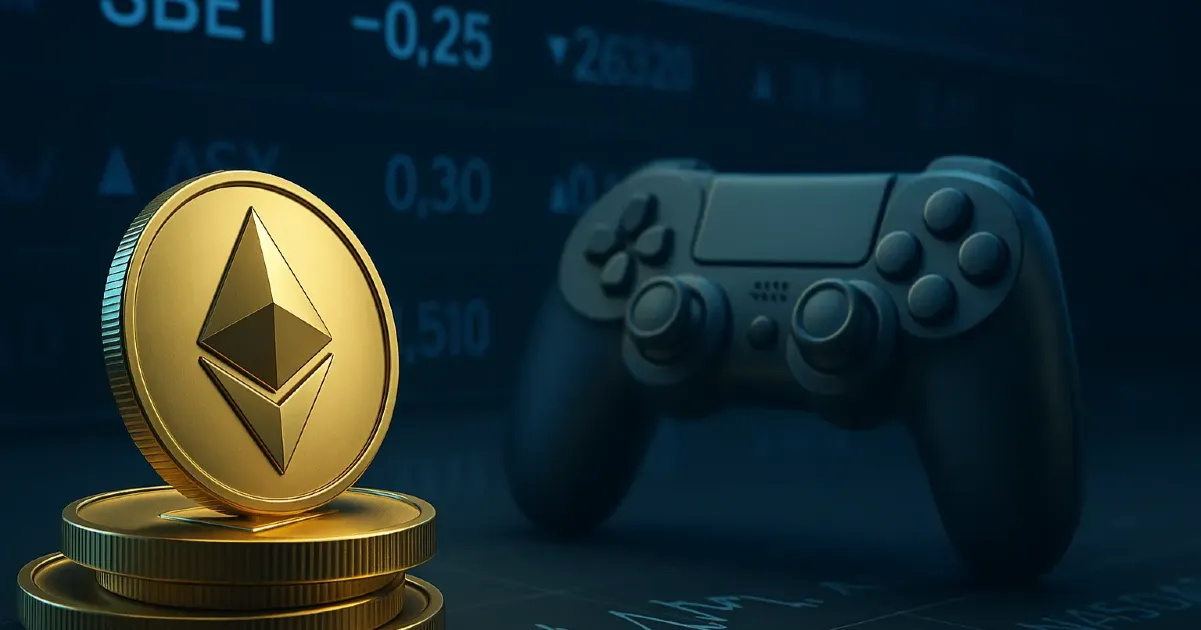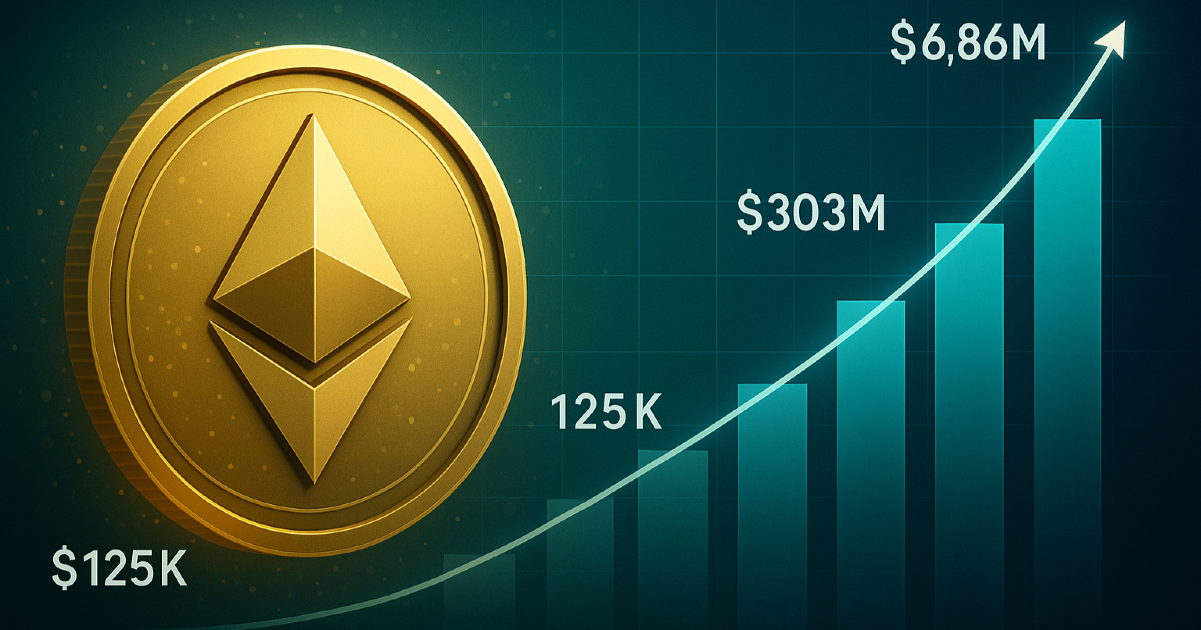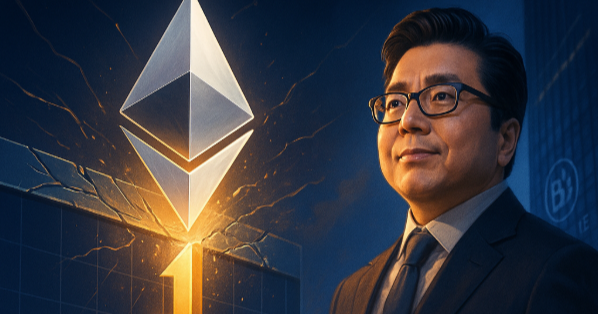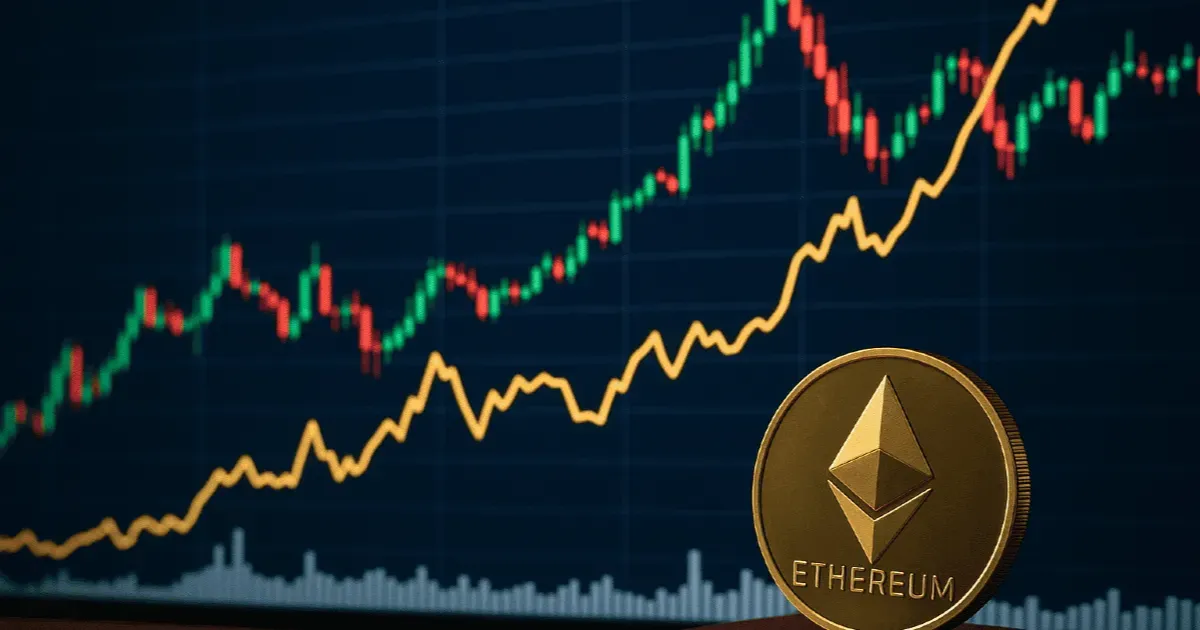SharpLink Gaming bought 10,000 ETH from the Ethereum Foundation and now holds over 205,000 ETH, fully staked, signaling intent to become a public Ethereum treasury leader.
When SharpLink Gaming quietly secured 10,000 ETH directly from the Ethereum Foundation, it wasn’t just another purchase; it was a statement. The Minneapolis-based gaming affiliate has taken another leap, investing $25.7 million and bringing its total holdings north of 205,000 ETH, now valued at over half a billion dollars. But beyond the headline number lies a more compelling narrative: this is a company doubling down on digital assets, staking all its ETH, and aligning its identity with the future of crypto.
A Bold Move from a Gaming Firm
SharpLink isn’t your typical crypto investor. It began life as a sports betting affiliate, trading under the ticker SBET on Nasdaq. Yet in the past months, decisions around treasury strategy have changed all that. First came a wave of Ethereum accumulation. Now, this purchase from the ***Ethereum Foundation bolstered SharpLink's position. Paying a market-derived $2,572 per ETH, they reclaimed nearly 0.01% of Ethereum’s total supply.
What was once a sideline bet has become a core strategy.
Tying Treasury to Staking Strategy
Ether isn’t being idle. SharpLink has committed it all to staking. Since early June, these holdings have already generated about 322 ETH in yield. This isn’t a side gig; it’s being built into the company’s DNA. Chairman Joseph Lubin, Ethereum co-founder and ConsenSys architect, termed it a “long-term commitment” to strengthening the network.
Staking adds layers of complexity: lock-up timelines, validator responsibilities, and node reliability. But it also means yield, network resilience, and a message: SharpLink isn’t here to trade. They want to own the narrative.
Stock Market Reaction: Volatility in Action
The market response mirrored the boldness of the move. SharpLink shares have been swinging wildly up nearly 46% in a week. Today’s 10,000 ETH buy triggered another jump. But history cautions that such volatility isn’t surprising for a Nasdaq crypto proxy. Earlier, the share price surged over 28% when total ETH holdings crossed 205,000; it also slammed 73% in a single night after confusion over share filings. That sharp sell-off wasn’t a market collapse; it was a wave of technical market reactions. And now, with the new 8-K filing, volatility may rise again unless the story remains clear.
Behind the Scenes: 8-K Filing Details
The legal mechanics are worth noting. SharpLink’s 8-K reveals both the purchase and a set of share-reserve waivers involving major stakeholders, including ConsenSys and Lubin. These waivers free up shares authorized under its ATM (at-the-market) equity sale plan, allowing the company to raise capital more flexibly before a shareholder vote on July 24. That vote will decide whether to approve more shares and restore reserved equity.
This isn’t lightweight governance. It shows a company navigating corporate mechanics while executing a heavily crypto-focused balance sheet strategy.
Comparing with Bitcoin-Focused Companies
Others have taken similar paths, but SharpLink is different. Most firms with crypto reserves favor Bitcoin. MicroStrategy made headlines by stacking satoshis. SharpLink chose Ethereum, staking it, and working alongside its co-founder. It’s more than financial hedging; it’s a story of identity and alignment.
Companies like Bit Digital have mimicked the pivot from BTC to ETH. But SharpLink’s position feels more intrinsic: ETH forms the core narrative around everything from treasury to token economics.
What Stakeholders Should Watch
This isn’t guaranteed success. Ethereum’s price can falter, staking terrain can shift, and regulations can tighten. Meanwhile, the company's reliance on equity markets means investor dilution and voting uncertainty remain either catalysts or risks.
The July 24 shareholder meeting is critical. Will investors back the strategy? If not, the plan may stall, and volatility will likely spike.
That said, if growth continues and the staking operation succeeds, SharpLink could become the premier public Ethereum proxy, a hybrid of corporate steadiness and digital innovation.
Why This Could Matter
Every time a corporate balance sheet touches crypto, it sparks debate. With this move, SharpLink touches multiple narrative threads:
- It boosts Ethereum’s perceived institutional legitimacy.
- It fades the Bitcoin-only treasury narrative, showing ETH can be central.
- It shines a spotlight on corporate staking, scarce but rising on public ledgers.
For investors and observers, SharpLink could become a case study in company-led treasury evolution from protected assets to network advocates.
Final Take
SharpLink Gaming didn’t just buy Ethereum; they doubled down on it. By buying from the Ethereum Foundation, staking every ETH, and weaving the strategy into corporate mechanics, they aren’t dabbling. They are committing. Under Joseph Lubin's watch, this company may define what "ETH publicly traded proxy" means in 2025 and beyond.
If it works, shareholders ride the ETH price upside plus staking yield. If it doesn’t, volatility will be the rule. But either way, SharpLink's move rattled the world of digital treasuries and confirmed that crypto stakes are no longer side bets.






